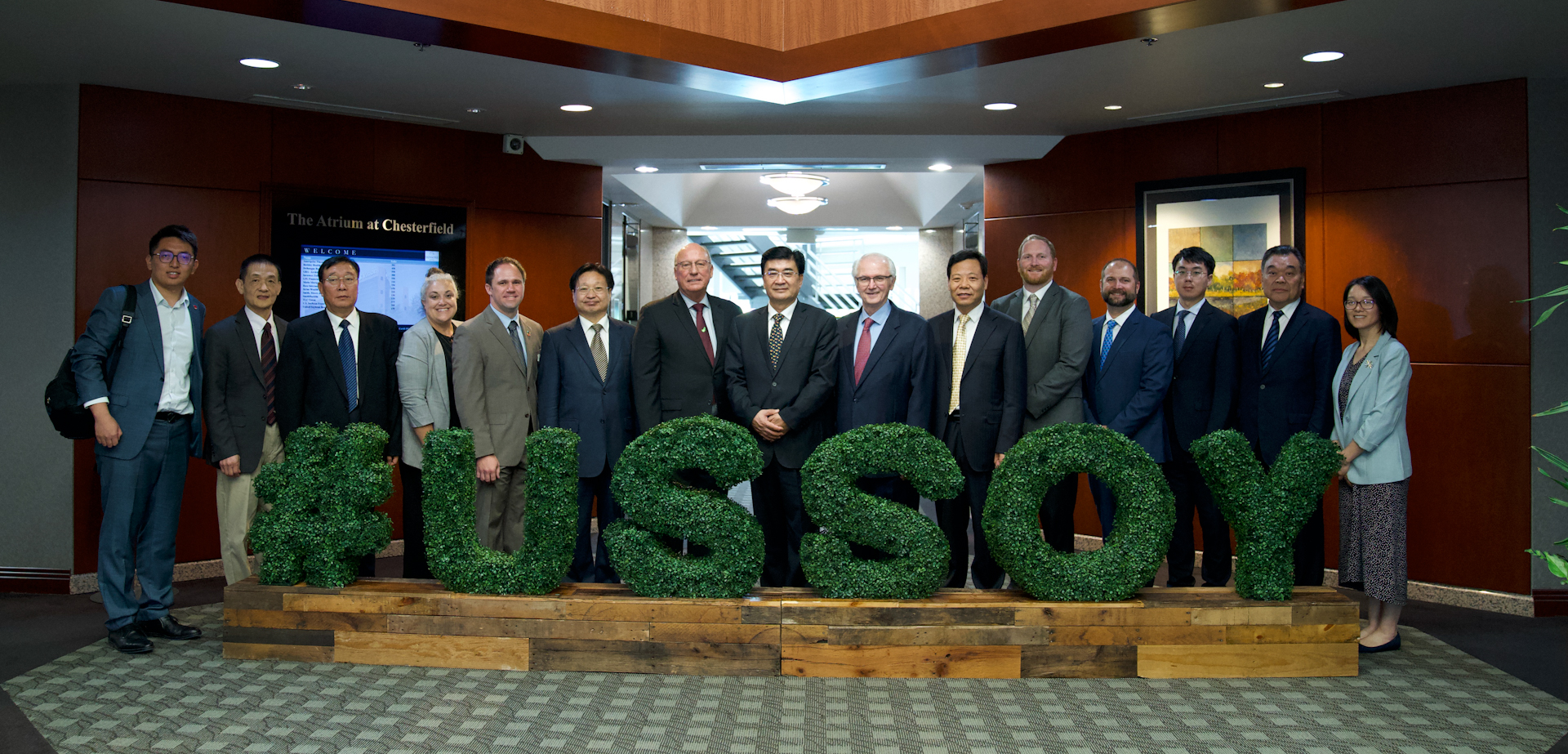Leaders from China’s Henan Province continue collaboration with U.S. on Sustainable Food and Agriculture
- Category:
- Ground Work
- In The News
- Uncategorized

A delegation of six leaders from Henan were welcomed in St. Louis with a focus on sustainable U.S. Soy, on-farm conservation practices and innovations throughout the value chain.
From what is considered as the “cradle of Chinese civilization,” six officials from China’s Henan Province met with leaders representing the U.S. food and agriculture sector including U.S. Soy to identify opportunities, learn about sustainable farming practices, and the role of partnerships in the advancement of conservation technologies.
Henan is home to approximately 100 million people and is known for its rich history as an economic, cultural and political hub in China. In 2022, Henan’s GDP reached approximately USD 864 billion, representing a year-on-year growth rate of 3.1%. [1]The Henan province is also home to many food and agriculture processing companies.
The delegation was welcomed to St. Louis, Missouri, U.S.A. on September 14, and cohosted by the U.S. Soybean Export Council (USSEC) and the U.S. Heartland China Association.
“As a USSEC representative and a U.S. Soy farmer, I have a deep appreciation for the positive impact of collaboration between China and the U.S. Soy over 40 years in China and on the U.S. economy,” said Doug Winter from Mill Shoals, Illinois, and immediate past Chairman of the USSEC Board of Directors.
Winter shared that he was Chairman of USSEC when the U.S.-China Soy Value Chain Innovation Center was setup in the Henan Province in China.
“Through technical training, knowledge transfer and services, the Soy Innovation Center strives to promote continuous innovation, enhance cooperation, and the development of China’s livestock, poultry, aquaculture, animal feed production, soy protein and edible oil industry in association with Henan University of Technology and other local partners.” he said.
Winter shared that four training sessions have been completed since the opening of the SIC in February 2023 with two more planned for November and December this year.
Representatives from Bayer CropScience and the Missouri Soybean Merchandising Council shared the importance of investing in research and innovation to advance farm productivity, conservation and stewardship practices, towards helping meet shared goals for sustainable nutrition.
Josh VanDeWalle, North American Lead of Global Food Chain Partnerships for Bayer, emphasized that climate change is a challenge for those in agriculture.
“This means farmers have to continue to innovate and look for ways to be more sustainable,” VanDeWalle said, adding that Bayer invests $2.6 billion euros in crop science research and development each year.
Matt Amick, Director of Market Development, and Clayton Light, Director of Conservation Ag and Farm Operations at Missouri Soy, spotlighted Missouri soy farms, and programs that advance research, on-farm learnings, and help incentivize sustainability practices.
“In the coming weeks through November, Missouri’s soybean farmers will harvest about 2.25 million hectares (approx. 5.5 million acres),” Amick said. “Then we will plant about half a million hectares (1.2 million acres) of cover crops to protect and provide nutrients to the soils during these winter months.”
Amick shared that Missouri farmers had great spring planting weather, but that it had been very dry up until July. Despite that, he said farmers anticipate an average yield.
“That’s a testament to improved seed genetics, technologies, and conservation practices that help farmers conserve resources while achieving productivity,” he said. “We anticipate about 6.8 MMT of production and hope that it ends up in the hands of Chinese customers.”
Committed to Collaboration
The Chinese delegation was led by Mr. He Jinping, Vice Chairman of the Standing Committee of Henan Provincial People’s Congress and included:
“I think future cooperation between Henan and USSEC is quite bright,” said Jinping, sharing that the farmers in Henan grow enough food to provide each Chinese citizen with about 50 kilos, or 110 pounds, per year.
However, he noted that when it comes to soybeans, they only grow about half of what is needed.
“That means we need to import 3 MMT of soybeans from other markets and countries,” Jinping said. “The Soybean Value Chain Innovation Center adds learning from and how to maximize use of U.S. Soy. We want to continue investing in innovations … and emphasize the importance on green practices, and prioritize the import and exports of such products.”
Jinping added: “We think quality should be of higher importance. That means there’s huge space for sustainable, high-efficient agriculture development, education, and tourism. We look forward to enhanced future cooperation in the coming years.”
That sentiment was echoed by both USSEC CEO Jim Sutter and Governor Bob Holden, Chairman and President of the U.S. Heartland China Association.
“When I was governor of Missouri, I opened our State’s first office in China,” Holden said. “I have stayed with that commitment and continue to do so with my organization. We are committed to finding ways for these two cultures to work together for the benefit of all society.”
Sutter noted the Soy Value Chain Innovation Center is just one of the many ways we are collaborating for the benefit of everyone.
“Our mission is to connect the soy value chain, starting with the U.S. Soy farmers all the way to consumers, through the application of innovative technologies, advanced concepts, creative practices and quality products to achieve economic and social benefits,” Sutter said. “This success cannot be achieved without the strong support from the Henan Provincial Government and from you, Mr. He.”
“The U.S. is Henan’s largest trading partner, and I believe the Soy Value Chain Innovation Center will further benefit Henan’s livestock industry and the soybean value chain. It’s a major milestone in advancing the development of the soybean industry in China and the U.S. We remain committed to collaborating to support China’s vision for nutrition security and economic growth.”
This story was partially funded by U.S. Soy farmers, their checkoff and the soy value chain.
###
[1] Delegation of Henan Province, China ( Visiting the United States, Uruguay, Panama) 2023.09 brochure